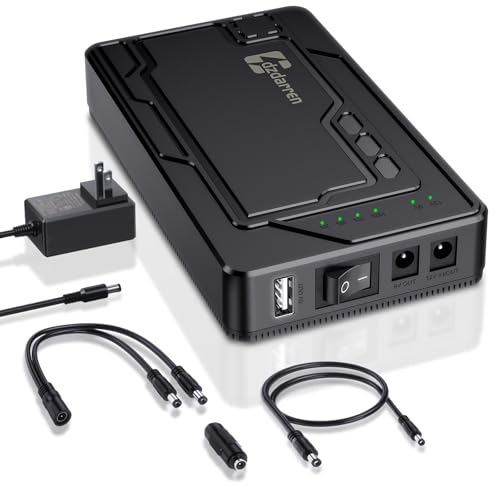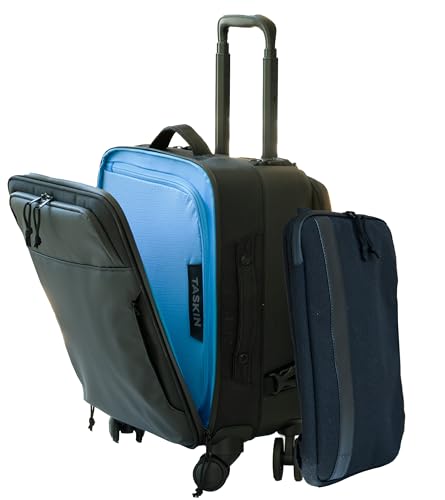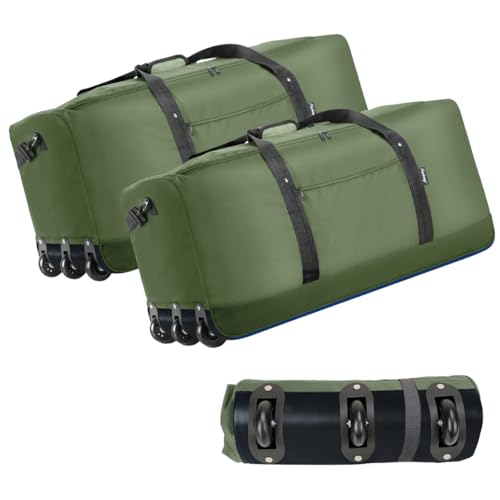





Storing lithium-ion charging devices in cargo compartments is prohibited. Airlines enforce these rules to mitigate fire risks associated with these energy storage units during flight. Carrying your device in the cabin is the safest option, allowing for immediate access if issues arise.
Most airlines mandate that units exceeding specific watt-hour ratings must be transported in personal carry-ons. Typically, the threshold is set at 100 watt-hours. Checking the specifications is crucial to ensure compliance with airline regulations, which may vary among carriers. Always consult your airline’s policy for the specifics.
For added safety, ensure that the charging units are protected from short circuits by covering the terminals and preventing contact with metal objects. Knowing these guidelines will help avoid complications and ensure a smooth travel experience.
Storage of Portable Chargers in Baggage
Storing portable chargers in luggage that is checked is generally prohibited by airlines and international aviation regulations. These devices often contain lithium-ion batteries, which pose a fire risk if damaged or short-circuited.
Regulatory Guidelines
Most regulations specify these points:
- Devices with lithium-ion batteries over 100Wh are typically not allowed in checked bags.
- Chargers under 100Wh may be permitted, but restrictions vary by airline.
- Any charger must be securely packed to prevent accidental activation.
Recommendations
To ensure compliance and safety:
- Carry portable chargers in your cabin baggage.
- Check with your airline for specific policies regarding battery-powered devices.
- Consider values and risks; it’s safer to have essential charging devices within reach.
Understanding Airline Regulations for Power Banks
Airlines impose specific restrictions regarding portable chargers due to safety concerns. Typically, devices with a capacity exceeding 160 watt-hours are prohibited across all travel modes. For smaller models, the limit usually ranges from 100 to 160 watt-hours, allowing a maximum of two devices on board.
Battery Capacity Guidelines
Always check the watt-hour rating before traveling. This information is often found on the device itself or in the user manual. If the rating is unclear, verify it through the manufacturer’s website or supporting documentation. Remember that lithium batteries present fire risks, prompting stricter regulations among airlines.
Airline-Specific Policies
Each airline may have unique rules surrounding the transportation of these chargers. Visit the airline’s official website for their specific guidelines. Additionally, certain international regulations may differ from domestic travel policies. Keep informed about any regional differences that might affect your plans.
For more guidance on travel essentials, including reliable gear like umbrellas, consider checking out the best commercial umbrellas.
Potential Risks of Storing Power Banks in Checked Luggage
Storing energy storage devices in the hold of an aircraft poses multiple hazards. High-capacity lithium-ion batteries can overheat and, in some rare cases, catch fire. This risk escalates due to the confined environment of the cargo area, where flames may spread undetected, endangering aircraft safety.
Fire Hazards
Short circuits, whether from damage or manufacturing defects, can provoke thermal runaway. This condition leads to a rapid temperature increase, posing a significant fire risk. Airlines advise against placing these devices in checked bags for this reason. Fire detection and suppression systems in cargo areas may not respond swiftly enough to contain such incidents.
Regulatory Compliance and Safety Checks
Transport Safety Administration regulations categorize certain energy storage units as hazardous materials. Violation of these guidelines can lead to penalties for passengers and airlines. Furthermore, inspection processes may expose baggage to rough handling, resulting in battery damage, which amplifies risks. Always consult airline policies and prioritize safety when traveling with energy storage devices.
What Battery Capacity Limits Apply to Checked Luggage?
Limitations on battery capacity for items placed in the hold area are structured for safety. Typically, items with a capacity of up to 100 watt-hours (Wh) are allowed without prior airline approval. Batteries that fall between 100Wh and 160Wh may require permission from the airline.
| Watt-Hours (Wh) | Airline Approval Required | Usage |
|---|---|---|
| Up to 100Wh | No | Allowed in most circumstances |
| 100Wh – 160Wh | Yes | Potential for use with permission |
| Above 160Wh | No | Prohibited |
It is advisable to always check specific airline policies regarding battery rules before travel. For trips requiring portable storage, consider the best carry on rolling duffel bag for international travel for both convenience and safety.
Additionally, be aware that batteries should not be short-circuited; use plastic caps or tape over the terminals for protection. For high-capacity energy storage, options like the best haier washing machines can provide robust performance without needing to worry about stringent travel regulations.
Best Practices for Packing Battery Packs Safely
Transport battery packs in your carry-on, not in your checked items. This minimizes the risk of damage and ensures immediate access if needed.
Use Smart Packaging
Wrap each unit in protective materials such as bubble wrap or cloth to prevent contact with metallic objects that could cause accidental activation or short-circuiting. Consider using a dedicated pouch designed for lithium-ion products, which often includes padding.
Label Clearly
Clearly mark your battery devices and their capacities to comply with airline regulations. Specify their watt-hour ratings, which simplifies the security screening process and reduces misunderstandings with airline staff.
Alternatives to Carrying Power Banks in Checked Bags
Consider bringing a portable charger with a lower capacity, such as those rated below 100Wh. These are typically acceptable for transport in various compartments. Alternatively, rely on device power-saving modes to extend usage during travels.
Utilize public charging stations available at airports, cafes, and other venues. Many terminals offer USB ports or dedicated charging points for passenger convenience.
Bring extra charging cables to connect to devices available on the aircraft or at terminals, ensuring you’re always in control of connection options.
Invest in devices with extended battery life or higher capacities, allowing longer usage times between needs for recharging. Some electronics come equipped with high-efficiency batteries built-in.
Explore solar-powered chargers if traveling in areas with abundant sunlight. These can be a reliable source of energy without the need for traditional wall outlets.
For emergency situations, consider a car charger if using personal vehicle transport to the airport. This can be beneficial before the trip to ensure devices are fully charged.
FAQ:
Can I take a power bank in my checked luggage?
No, it is not advisable to keep a power bank in checked luggage. Most airlines and safety regulations recommend that power banks be carried in cabin baggage. This is primarily due to the risk of fire that lithium-ion batteries can pose if they malfunction or are damaged.
Why are power banks not allowed in checked luggage?
The primary reason power banks are not permitted in checked luggage is related to safety concerns. Lithium batteries can potentially overheat and ignite if damaged or short-circuited. Keeping them in the cabin allows for immediate response in case of an emergency, ensuring passenger safety.
Are there any specific regulations for power banks on flights?
Yes, many airlines and aviation authorities have specific guidelines for transporting power banks. Generally, power banks should have a capacity of no more than 100 watt-hours (Wh) in carry-on luggage. Some airlines allow devices with higher capacities, but you should check with your specific airline for their regulations.
What should I do if my power bank exceeds the allowable limit?
If your power bank exceeds the allowed capacity for air travel, you have a few options. You can choose to leave it at home, switch to a compliant power bank, or see if your airline allows it as checked luggage with specific precautions. Always consult your airline’s guidelines to understand your options thoroughly.
Can I charge my devices with a power bank during the flight?
Yes, you can use a power bank to charge your devices during the flight as long as it complies with the airline’s regulations. Make sure your power bank is in your cabin luggage and follow the airline’s rules regarding the use of electronic devices during the flight. Many airlines provide in-seat charging options as well.







